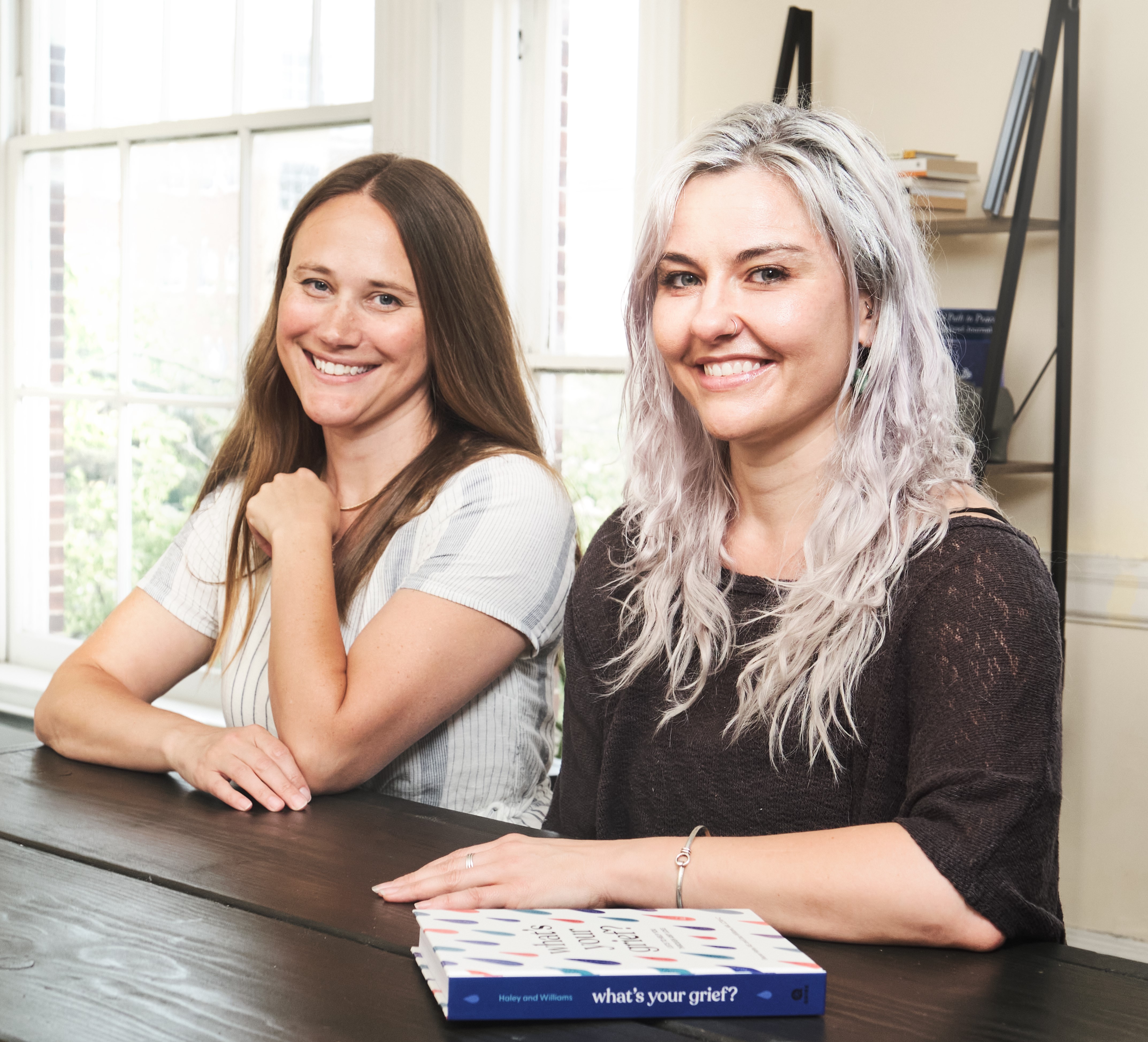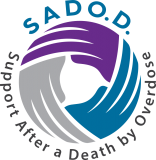
Writing Duo Takes on Grief
By Luke Schmaltz, VOICES Newsletter Editor
What’s Your Grief? Lists to Help You Through Any Loss is written for people of all ages and from all walks of life and provides a wealth of strategies for facing difficult circumstances of every imaginable sort.
Authors Litsa Williams and Eleanor Haley speak to the reader like longtime friends, extending help, guidance, and advice informed by research, experience, and good old-fashioned hope.
Williams is a clinical social worker, while Haley is a counseling psychologist. “Eleanor and I met working for an organization supporting families who were dealing with traumatic and unexpected deaths,” Williams explains.
What’s Your Grief? (WYG) started as whatsyourgrief.com, a blogging space where Williams and Haley could document the discoveries and frustrations they were experiencing in their professional lives. Currently, the site offers an abundance of insight, guidance, and useful information on dealing with grief – to the tune of over 700 articles, 95 percent of which were written by Williams and Haley.
An Essential Approach
“We started this in 2012,” Williams begins, “It was largely born of a gap that we saw in our professional work. We were doing traditional grief and aftercare support, but we had a lot of people who were looking for alternatives to therapy and support groups. In 2012, the online space – in terms of grief – was very different. There was not much that was accessible and evidence-informed. So, we started the WYG website as this place for filling the needs we were experiencing with our own clients.”
Haley elaborates further on this, explaining, “Our personal experiences inspired us to fill that perceived gap by stepping back and asking, ‘What was it that I needed when I was new to grief? What types of grief support did I gravitate towards? What kinds of conversations did I want to have?’ It's not that we assumed everyone wanted or needed the same things we did, but we knew some people would, and we wanted to create straightforward, relatable, nuanced grief content and communities for those who did. Much of my writing reflects my need to understand my losses, grief, and ongoing connection with the past and people who’ve died.”
Filling the Void
“In our own personal losses, therapy and support groups were not ever what really helped us or worked for us,” Williams continues. “So, we were really invested in creating a space that did a better job of acknowledging all of the other ways that people cope with grief.”
“We heard from so many people that our work was a counterpoint to books and other supports that weren’t helping them. We wanted to make a book for people who are in the earliest parts of grief, when attention spans are low, and it is hard to focus and digest a lot of information.”
“We never set out to write a book,” Williams continues, “But over the years, we had publishers reach out to us to ask about writing a book. We said no several times, but then COVID happened, another publisher reached out, and this time since it had really affected our day-to-day lives, we had a different conversation. Eleanor said to me, ‘Well, if we don’t do it now, I don’t think we’re ever going to do it.’”
Non-Death Loss
In the world of grief, death seems to overshadow, and sometimes diminish, the validity of grief over other life circumstances. Williams and Haley learned about the importance of this through their professional work as well as from their WYG audience. “Bereavement loss was certainly a part of our grief experiences, “Williams says, “But non-death loss was really significant too. Eleanor’s brother had a traumatic brain injury that turned their entire family upside down. In my family, after my dad died, my sister developed a heroin addiction and a decade of that made me very aware that grief does not just start when someone dies. We can be grieving people who are still alive.”
“We have really been influenced by the work of Pauline Boss. She writes a lot about ambiguous loss which is grieving someone who is still alive. Often, we don’t give ourselves permission to call that grief. It is a word that is reserved for after a death.”
To this point, Haley adds, “I'm struggling to think of a non-death loss that doesn't get overlooked. I think we minimize or ignore non-death losses for many reasons, and one reason I've noticed which causes a lot of guilt and confusion is when the person feels like it's a betrayal to grieve those who are still living. Or sometimes, that person can feel torn between feelings of gratitude and loss.”
“For example,” Haley continues,” Consider how confusing it must be for a child who's content in their foster home but grieves the changed relationship, or loss of the dream of a relationship, between them and their biological family. No matter how they feel, they may worry they are betraying someone. And so, what does a child do with those feelings? Do they end up feeling ashamed and guilty for feeling the way they feel? Do they decide they must choose one way to feel and ignore the totality of their experience?”
Informed by In-Person Experience
For six years prior to COVID, Williams and Haley ran open, in-person grief groups in a large, no-barrier homeless shelter in Baltimore City. “The amount of loss people brought into those groups,” Williams begins, “was a domino effect of all the losses that brought them to that point of homelessness. You would see people grieving every sort of non-death loss you can imagine. It was an amazing space for us to be able to see people show up for each other.
Haley offers further insight into the experience. “Because these groups weren't just for people who've experienced the death of a loved one, we had people join us to discuss many different types of loss-related experiences,” she says. “From concrete losses like the loss of a job or a home to more abstract losses associated with aging, grieving hopes and dreams, and the loss of specific world-views and beliefs. No one avoids going through loss and, the reality is, as we go through life these add up and change our perspective on how we see the world and spend our days, in good ways and bad.”
What’s Your Grief? is an indispensable tool for anyone dealing with the death of a loved one, major life changes, or the non-death loss of something irreplaceable. Additionally, the WYG website resource page offers webinars, brochures, booklets, online courses, blog posts, and more.
